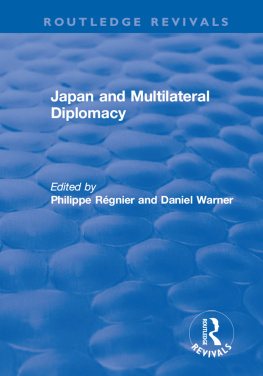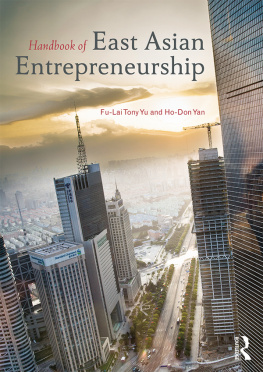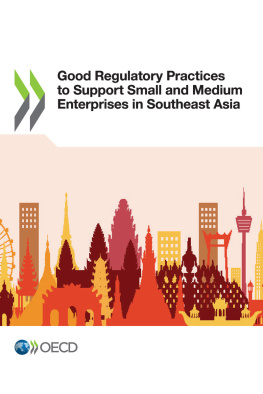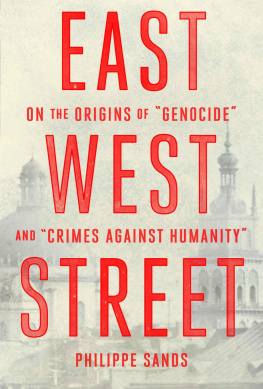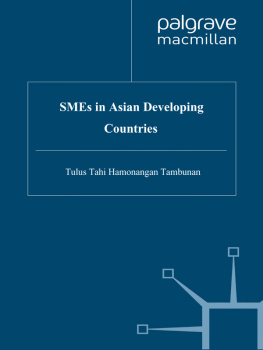
SMALL AND MEDIUM ENTERPRISES IN DISTRESS
Since the outbreak of the East Asian crisis in 1997, world attention has focused on the debt restructuring and corporate reform of financial institutions and large enterprises in the affected economies. Although the SME sector has been more severely hit than big firms and responsible for the rapid rise of unemployment, it has been completely neglected both by local governments and international donors. There are signs of economic recovery since late 1999, but it is far from sustainable and the vast majority of SMEs continue to be left aside. This book is the first to deal with SME distress throughout the crisis and beyond. It challenges the negative effects of structural adjustment policies adopted in Thailand and elsewhere in the region. It provides suggestions and case studies for promoting local SMEs domestically and possibly internationally. Important reading for specialists in business economics, entrepreneurship and small firms, and Asian-Pacific development economics.
Small and Medium Enterprises in Distress
Thailand, the East Asian crisis and beyond
PHILIPPE RGNIER
Director, Modern Asia Research Centre
University of Geneva, Switzerland
First published 2000 by Gower Publishing
Reissued 2018 by Routledge
2 Park Square, Milton Park, Abingdon, Oxon OX14 4RN
711 Third Avenue, New York, NY 10017, USA
Routledge is an imprint of the Taylor & Francis Group, an informa business
Copyright Philippe Rgnier 2000
All rights reserved. No part of this book may be reprinted or reproduced or utilised in any form or by any electronic, mechanical, or other means, now known or hereafter invented, including photocopying and recording, or in any information storage or retrieval system, without permission in writing from the publishers.
Notice:
Product or corporate names may be trademarks or registered trademarks, and are used only for identification and explanation without intent to infringe.
Publishers Note
The publisher has gone to great lengths to ensure the quality of this reprint but points out that some imperfections in the original copies may be apparent.
Disclaimer
The publisher has made every effort to trace copyright holders and welcomes correspondence from those they have been unable to contact.
A Library of Congress record exists under LC control number: 00132844
ISBN 13: 978-1-138-72910-0 (hbk)
ISBN 13: 978-1-315-19012-9 (ebk)
Contents
Since 1998 we have observed a worldwide inflation of diagnosis, studies and theories attempting to explain, justify or criticize the recent East Asian economic crisis and its treatment. In the most affected emerging economies themselves, various studies have been conducted or are still currently being performed on the impact of the crisis on the major economic and financial sectors. However, almost no studies have been done to examine the effects of the crisis and structural adjustment policies on small and medium-sized enterprises (SMEs). This shows how far this category of firms has been neglected and this has been even more surprising in the case of Thailand, whose government has initiated since early 1999 an ambitious project to draft a first SME Promotion Law and to implement an SME Master Plan until 2004.
The idea for this book emerged toward the end of 1997, when the first effects of the crisis became clear. It also referred back to previous and more minor financial crises quite long ago such as in 1979 (fall of a major finance company and collapse of the Thai stock exchange) or in 19831984 (failures of 15 financial institutions in Bangkok and rescue by the Ministry of Finance of 32 others).
The 19971998 crisis seemed originally of a purely financial nature, affecting the conglomerates and other big corporations of East Asia. Therefore, it can be understood why very little was initially said on its possible spillover effects on the real economy and manufacturing in particular. No concern was immediately expressed about the possible collapse of a number of local SMEs. This is rather surprising considering that the large majority of SMEs, and not only in emerging economies, are generally perceived as fragile and vulnerable to sharp market fluctuations. But everyone knows that SMEs rarely constitute a strong lobbying pressure group.
From early 1998 unemployment figures started to rise rapidly in all the affected economies of the region, and Thailand was no exception. On the one hand, large enterprises were not as yet engaged in significant corporate restructuring and were not responsible for massive cuts in jobs except in the financial sector (a number of financial companies were closed down). On
the other hand, both registered SMEs and micro-enterprises of the informal sector were a major source of unemployment, especially among unskilled and seasonal workers. Furthermore, the crisis led to a credit crunch which badly hit the SME sector. In addition to the collapse of domestic/regional demand, it was directly responsible for the multiplication in SME bankruptcies.
It was only more than one year after the beginning of the crisis and during the last quarter of 1998 that East Asian governments and international donor agencies started to look more deeply into the key structural factors behind the crisis. Bad loan management and other financial malpractices were denounced and a number of other fundamental economic weaknesses were also gradually addressed despite early warnings by a few leading economists such as Paul Krugman.
The relative loss of competitiveness and export decline among East Asias most affected economies even before mid-1997 was underlined. Thailand was right there in the front line, as illustrated by two regional industrial surveys conducted by the World Bank in 1997 and 1998. Even more interestingly, the productivity problem was not exclusively detected among big scale manufacturers and exporters, but also among the so-called supporting industries (medium-sized enterprises) and local SMEs at large. The structural weakness of the missing middle was pointed out in terms of an important shortage of middle-sized and growth-oriented SMEs acting as leading subcontractors and venture firms in their own right. This problem also referred to the low density of industrial linkages between local SMEs and large outsourcing firms, both foreign and national.
By the time this research project was started during the spring of 1999, big corporate restructuring and SME promotion had apparently become a priority issue. This was particularly true in the case of Thailand, where the Cabinet started to address the SME problem together with Japanese assistance in late 1998. Unlike other East Asian economies, problems of SMEs have stood quite high on the 19992000 political agenda in Thailand. In the context of forthcoming legislative elections, the SME issue is expected to remain present in the political discourse and the media after the adoption of the first SME Promotion Bill in January 2000. This could constitute a rather drastic turn in industrial policy compared to previous neglect. During several decades of rapid growth since the 1960s and until the 1997 crisis, the development strategy was exclusively based on big scale industrialization and high concentration of domestic and foreign investment in manufacturing and services.




